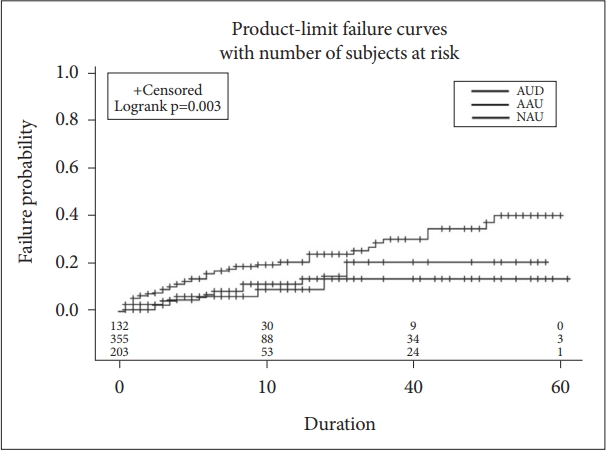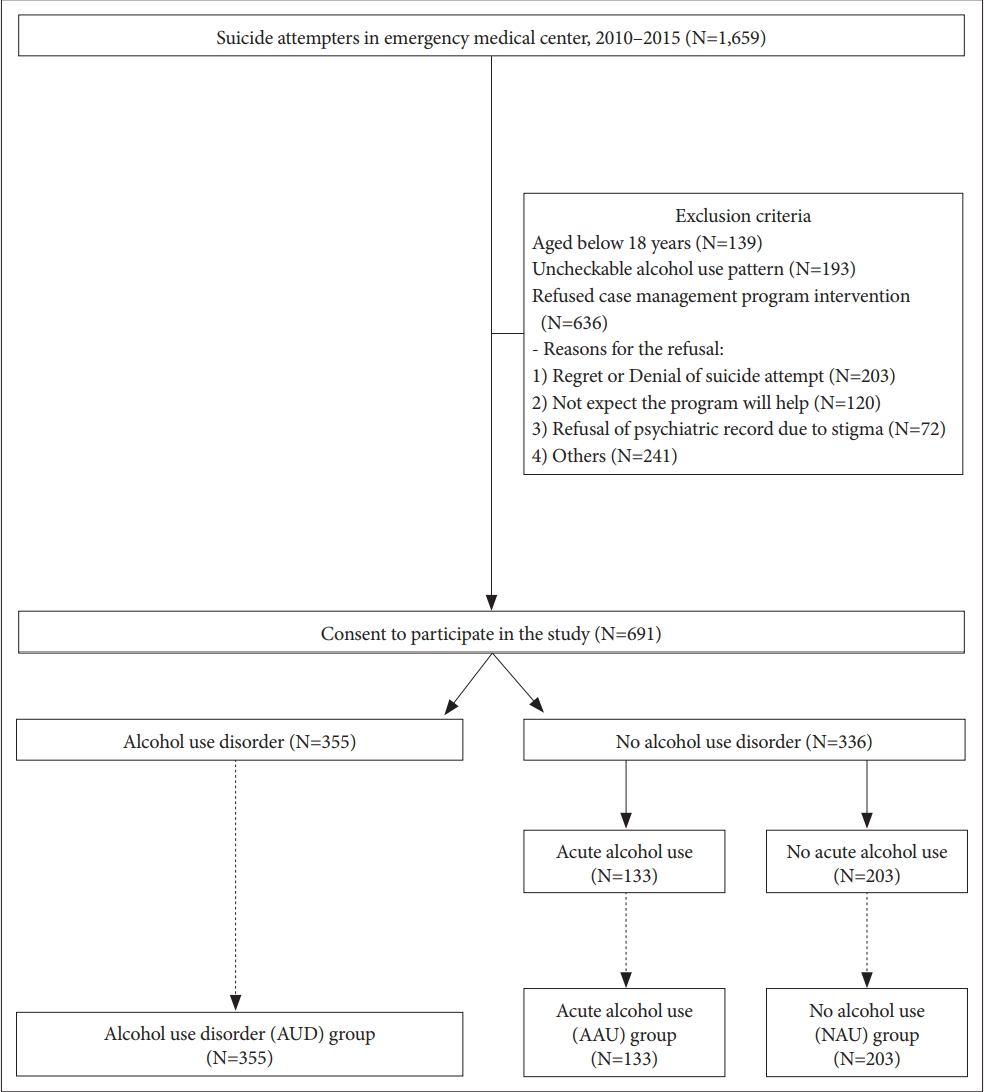1. Ezzati M, Lopez AD, Rodgers A, Vander Hoorn S, Murray CJ; Comparative Risk Assessment Collaborating Group. Selected major risk factors and global and regional burden of disease. Lancet 2002;360:1347-1360.


2. Cavanagh JT, Carson AJ, Sharpe M, Lawrie SM. Psychological autopsy studies of suicide: a systematic review. Psychol Med 2003;33:395-405.


4. Flensborg-Madsen T, Knop J, Mortensen EL, Becker U, Sher L, Gr├Ėnb├”k M. Alcohol use disorders increase the risk of completed suicideirrespective of other psychiatric disorders. A longitudinal cohort study. Psychiatry Res 2009;167:123-130.


5. Borges G, Rosovsky H. Suicide attempts and alcohol consumption in an emergency room sample. J Stud Alcohol 1996;57:543-548.


6. Boenisch S, Bramesfeld A, Mergl R, Havers I, Althaus D, Lehfeld H, et al. The role of alcohol use disorder and alcohol consumption in suicide attempts-A secondary analysis of 1921 suicide attempts. Eur Psychiatry 2010;25:414-420.


7. Lejoyeux M, Huet F, Claudon M, Fichelle A, Casalino E, Lequen V. Characteristics of suicide attempts preceded by alcohol consumption. Arch Suicide Res 2008;12:30-38.


9. Hawton K, Fagg J, McKeown SP. Alcoholism, alcohol and attempted suicide. Alcohol Alcohol 1989;24:3-9.

10. OECD. Suicide rates (indicator). Available at: doi:
10.1787/a82f3459-en. Accessed November 7, 2018.
12. Hillbrand M, Krystal JH, Sharpe KS, Foster HG. Clinical predictors of self-mutilation in hospitalized forensic patients. J Nerv Ment Dis 1994;182:9-13.


13. Weisman AD, Worden JW. Risk-rescue rating in suicide assessment. Arch Gen Psychiatry 1972;26:553-560.


14. Misson H, Mathieu F, Jollant F, Yon L, Guillaume S, Parmentier C, et al. Factor analyses of the Suicidal Intent Scale (SIS) and the Risk-Rescue Rating Scale (RRRS): toward the identification of homogeneous subgroups of suicidal behaviors. J Affect Disord 2010;121:80-87.


15. Babor TF, Kranzler HR, Lauerman RJ. Early detection of harmful alcohol consumption: comparison of clinical, laboratory, and self-report screening procedures. Addict Behav 1989;14:139-157.


16. Bush K, Kivlahan DR, McDonell MB, Fihn SD, Bradley KA. The AUDIT alcohol consumption questions (AUDIT-C): an effective brief screening test for problem drinking. Arch Intern Med 1998;158:1789-1795.


17. Seong JH, Lee CH, Do HJ, Oh SW, Lym YL, Choi JK, et al. Performance of the AUDIT alcohol consumption questions (AUDIT-C) and AUDITK question 3 alone in screening for problem drinking. Korean J Fam Med 2009;30:695-702.


18. Cherpitel CJ, Borges GLG, Wilcox HC. Acute alcohol use and suicidal behavior: a review of the literature. Alcohol Clin Exp Res 2004;28:18s-28s.


20. Buri C, von Bonin B, Strik W, Moggi F. Predictors of attempted suicide among Swiss patients with alcohol-use disorders. J Stud Alcohol Drugs 2009;70:668-674.


21. Pennel L, Quesada JL, Begue L, Dematteis M. Is suicide under the influence of alcohol a deliberate self-harm syndrome? an autopsy study of lethality. J Affect Disord 2015;177:80-85.


23. Conner KR, Cox C, Duberstein PR, Tian L, Nisbet PA, Conwell Y. Violence, alcohol, and completed suicide: a case-control study. Am J Psychiatry 2001;158:1701-1705.


24. Zhang J, Wieczorek W, Conwell Y, Tu XM, Wu BY, Xiao S, et al. Characteristics of young rural Chinese suicides: a psychological autopsy study. Psychol Med 2010;40:581-589.


27. Gorwood P. Biological markers for suicidal behavior in alcohol dependence. Eur Psychiatry 2001;16:410-417.


28. Szanto K, Kalmar S, Hendin H, Rihmer Z, Mann JJ. A suicide prevention program in a region with a very high suicide rate. Arch Gen Psychiatry 2007;64:914-920.












